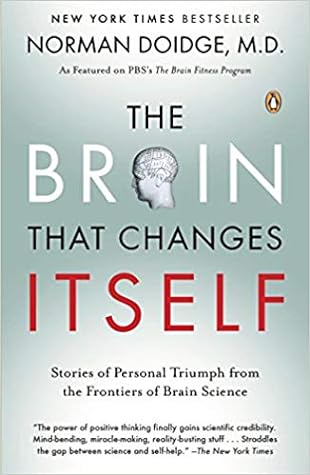Grafman has identified four kinds of plasticity. The first is “map expansion,” described above, which occurs largely at the boundaries between brain areas as a result of daily activity. The second is “sensory reassignment,” which occurs when one sense is blocked, as in the blind. When the visual cortex is deprived of its normal inputs, it can receive new inputs from another sense, such as touch. The third is “compensatory masquerade,” which takes advantage of the fact that there’s more than one way for your brain to approach a task.
Welcome back. Just a moment while we sign you in to your Goodreads account.


